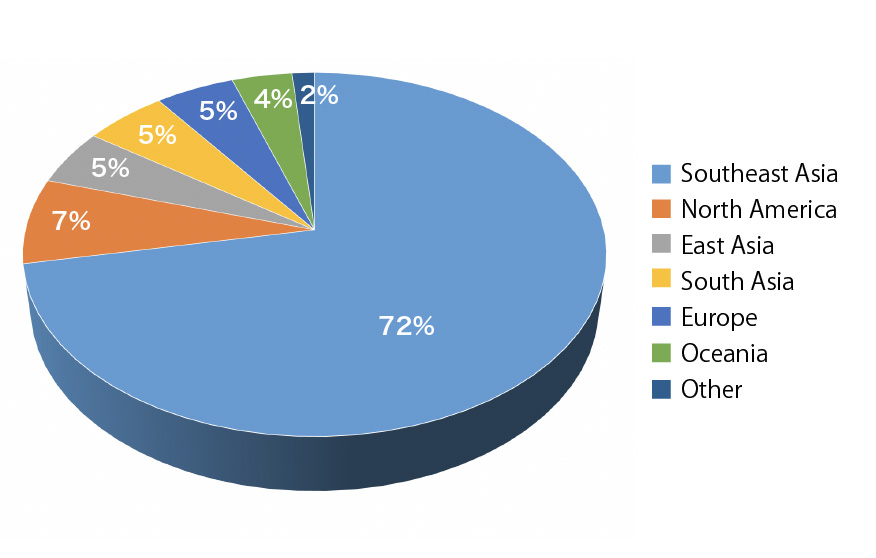

In Lower Burmese varieties, the verb ပေး ('to give') is colloquially used as a permissive causative marker, like in other Southeast Asian languages, but unlike in other Tibeto-Burman languages. The Mon language has also influenced subtle grammatical differences between the varieties of Burmese spoken in Lower and Upper Burma. Moreover, with regard to kinship terminology, Upper Burmese speakers differentiate the maternal and paternal sides of a family, whereas Lower Burmese speakers do not.

The most noticeable feature of the Mandalay dialect is its use of the first person pronoun ကျွန်တော်, kya.nau by both men and women, whereas in Yangon, the said pronoun is used only by male speakers while ကျွန်မ, kya.ma. In the past, the Mandalay dialect represented standard Burmese. The standard dialect is represented by the Yangon dialect because of the modern city's media influence and economic clout. For instance, for the term ဆွမ်း, "food offering ", Lower Burmese speakers use instead of, which is the pronunciation used in Upper Burma. Minor lexical and pronunciation differences exist throughout the Irrawaddy River valley.

Regional differences between speakers from Upper Burma (e.g., Mandalay dialect), called anya tha ( အညာသား) and speakers from Lower Burma (e.g., Yangon dialect), called auk tha ( အောက်သား), largely occur in vocabulary choice, not in pronunciation. The standard dialect of Burmese (the Mandalay- Yangon dialect continuum) comes from the Irrawaddy River valley. Spoken Burmese is remarkably uniform among Burmese speakers, particularly those living in the Irrawaddy valley, all of whom use variants of Standard Burmese. However, several Burmese dialects differ substantially from standard Burmese with respect to vocabulary, lexical particles, and rhymes.

The majority of Burmese speakers, who live throughout the Irrawaddy River Valley, use a number of largely similar dialects, while a minority speak non-standard dialects found in the peripheral areas of the country. Burmese was the fifth of the Sino-Tibetan languages to develop a writing system, after Chinese characters, the Pyu script, the Tibetan alphabet, and the Tangut script.


 0 kommentar(er)
0 kommentar(er)
